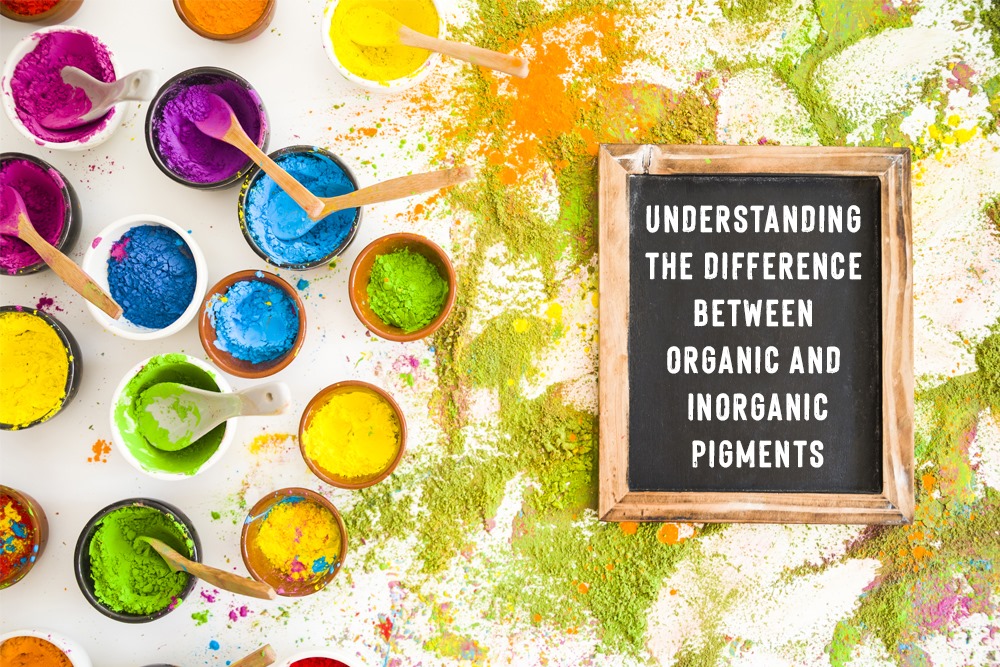When it comes to pigments, there are two primary categories that are widely used: organic and inorganic pigments. Both types have their own unique properties, applications, and benefits. In this blog, we will delve into the difference between organic and inorganic pigments, explore their importance, discuss their uses, and determine which one may be better suited for specific applications.
Organic Pigments
Organic pigments are colorants derived from carbon-based compounds, either obtained naturally or synthesized chemically. These pigments offer a wide range of vibrant and intense colors, making them popular choices in industries such as art, cosmetics, textiles, plastics, inks, and dyes. They are known for their excellent light fastness, ensuring resistance to fading when exposed to sunlight or other environmental factors. Additionally, organic pigments exhibit good transparency, tinting strength, and color purity, allowing for the creation of rich and vivid hues. Their versatility and broad color range make them essential components in various applications requiring vibrant and long-lasting colors.
Inorganic Pigments
Inorganic pigments are colorants that are derived from mineral-based compounds and do not contain carbon. These pigments offer a more limited color range compared to organic pigments but excel in producing earth tones, metallic colors, and stable lightfast shades. Inorganic pigments are known for their exceptional durability and resistance to heat, light, and chemicals, making them ideal for applications that require long-lasting and weather-resistant colors. They find extensive use in architectural coatings, ceramics, industrial coatings, concrete, bricks, tiles, plastics, glass, and printing inks. Inorganic pigments are valued for their durability and ability to withstand environmental factors, making them a preferred choice in applications where resilience and stability are crucial.
Difference between Organic and Inorganic Pigments
Organic and inorganic pigments are two distinct categories of colorants used in various industries. Understanding the difference between these pigments is essential in selecting the appropriate option for specific applications. Here are the key contrasts between organic and inorganic pigments:
Composition:
Organic pigments are derived from carbon-based compounds, often obtained from natural sources or chemically synthesized. In contrast, inorganic pigments are mineral-based compounds that do not contain carbon. They are typically sourced from naturally occurring minerals or produced through chemical processes.
Color Range:
Organic pigments offer a wide range of vibrant and intense colors. Their chemical structure allows for a more extensive color spectrum, including bright and bold hues. On the other hand, inorganic pigments have a more limited color range. They excel in producing earth tones, metallic colors, and stable lightfast shades.
Light fastness:
Light fastness refers to a pigment’s ability to resist fading when exposed to sunlight or other environmental factors. Organic pigments generally exhibit excellent light fastness, making them suitable for outdoor applications. They can maintain their color intensity and vibrancy for extended periods. Inorganic pigments also possess good light fastness, ensuring durability and resistance to fading.
Durability:
Inorganic pigments are known for their exceptional durability and resistance to heat, light, and chemicals. They offer excellent stability and permanence, making them ideal for applications that require long-lasting and weather-resistant colors. Organic pigments, while still durable, may not have the same level of resilience as inorganic pigments.
Applications:
Organic pigments are commonly used in the production of inks, dyes, cosmetics, and artist paints. Their vibrant colors and light fastness make them suitable for artistic and outdoor applications, such as automotive paints, textiles, and plastics. Inorganic pigments find extensive use in architectural coatings, ceramics, industrial coatings, concrete, bricks, tiles, plastics, glass, and printing inks. They are preferred for applications that demand durability and resistance to environmental factors.
Choosing the Best Pigment:
Selecting the best pigment depends on the specific requirements of the application. Factors to consider include color range, light fastness, durability, chemical stability, and intended use. Organic pigments are often favoured for their vibrant colors, light fastness, and versatility. In contrast, inorganic pigments are valued for their durability and resistance. Consulting experts or pigment suppliers can provide valuable guidance in making informed decisions.
In conclusion, organic pigments are derived from carbon-based compounds and offer a wide range of vibrant colors. They are known for their excellent light fastness and versatility, making them popular in various industries. On the other hand, inorganic pigments are derived from mineral-based compounds and excel in producing earth tones and metallic colors. They are highly durable and resistant to heat, light, and chemicals, making them ideal for applications that require long-lasting and weather-resistant colors. Understanding these differences enables informed decisions regarding pigment selection, ensuring optimal color performance and durability in different applications.
